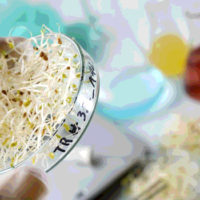The commentary by Dr. Andrew Ebert in the December 6 FSM eDigest criticized consumers who choose organic food, the regulatory system that governs it and two civil society groups: the Natural Resources Defense Council and our organization, The Cornucopia Institute.
He described our advocacy for good food as based on “flawed science.” He used the debate concerning the continued use of the food additive carrageenan, a seaweed-based coagulant and stabilizer, as an example. We have long championed the removal of carrageenan from organic processed food as it is harmful to human health and it is unnecessary for the processing of these foods.
In actuality, Dr. Ebert’s commentary makes for an excellent case of “dueling science” between publically funded and industry-funded research.
What about that “flawed” science that The Cornucopia Institute depended on when exposing concerns that food-grade carrageenan poses human health risks as an inflammatory agent and possible carcinogen?
We cited over 30 peer-reviewed publications, representing over four decades worth of research, from dozens of publicly funded labs, all indicating health risks from consuming carrageenan. Some of the U.S. funding for these studies was obtained through competitive grants from the National Institutes of Health—they are publicly funded.
The Chicago Tribune did a cover story on the issue when it first became a controversy in the organic industry. They asked Marinalg International, as well as the U.S. Food and Drug Administration (FDA), to find just one study concluding carrageenan was safe that wasn’t funded by the industry. No examples were provided.[1]
Astute entrepreneurs in the food industry recognize that there is a market of eaters who want a stricter level of regulatory oversight of food than is currently provided by FDA or the U.S. Department of Agriculture. These entrepreneurs know the downside risks of ignoring the concerns of their customers.
Why are fewer food additives approved for use in Europe? Because they operate in a more conservative regulatory environment by using “the precautionary principle.” When evidence is inconclusive, they err on the side of safety.
Consumers who pay a premium for organic food are not looking for a chemistry experiment. As Dr. Ebert stated, everything in food is a chemical, including water. But we all know that when consumers voice their concerns about “chemicals,” they are talking about novel, synthetic compounds that have only recently become a part of the human diet, in terms of the evolutionary history of our species.
Organic regulations do not ban the use of synthetic or nonorganic ingredients. However, the Organic Foods Production Act (OFPA), passed by Congress in 1990, requires nonorganic inputs to be vetted to a higher level of assurance in terms of human health and environmental impacts. And, under OFPA, synthetic compounds are only legally allowed if they are necessary and certified organic or natural equivalents are unavailable.
Dr. Ebert questioned the credibility of the USDA’s National Organic Standards Board (NOSB), charged by Congress with reviewing food additives for use in organics, by stating that, out of the 15-member board, only one seat was designated for a scientist.
While that is correct, remember that the NOSB is a federal advisory board made up of 15 public volunteers from across the organic community. Established by OFPA and governed by the Federal Advisory Committee Act, the NOSB considers and makes recommendations on a wide range of issues, involving the production, handling and processing of organic products. The NOSB also has special responsibilities related to the National List of Allowed and Prohibited Substances.[2]
But before we close, let us use carrageenan as an example, as Dr. Ebert did.
He cited studies by the industry and a number of talking points used by lobby groups, trying to discredit those with legitimate concerns, like Cornucopia and its members.
Also, the NCM460 cell line that Dr. Ebert and the carrageenan lobby criticize is derived from normal colonic mucosa and is useful to model effects on colonic cells, in the same way that other intestinal cell lines, such as Caco2 and HT29, are useful. With proper repetitions, negative controls and statistical analyses, the effects of carrageenan exposure on human cells can be better understood.
Dr. Ebert suggested to the industry that we should always strive for “better science” related to food safety. We couldn’t agree more.
But part of doing good science is to begin by discerning what prior research is credible. And that has to be done in an ethical manner, where financial entanglements are disclosed.
Editor's note: In their original submission, the authors made reference to poligeenan, a highly inflammatory and carcinogenic substance, being present in all food-grade carrageenan. This statement was not supported by any scientific citations, and our examination of the literature revealed that there may be some confusion as to whether poligeenan is in fact degraded food-grade carrageenan. Until this controversy can be resolved, Food Safety Magazine has chosen to remove this part of their discussion. The authors can be contacted through their institute if readers are interested in their position in this matter.
Mark A. Kastel is cofounder of The Cornucopia Institute, a Wisconsin-based farm and food policy research group that acts as an organic industry watchdog.
Linley Dixon, Ph.D., is a policy analyst and senior scientist at Cornucopia.
References
1. articles.chicagotribune.com/2013-03-18/health/ct-met-carrageenan-0318-20130318_1_doubts-surface-fda-scientists-u-s-food/2.
2. www.ams.usda.gov/rules-regulations/organic/nosb.
Resource
1. www.foodsafetynews.com/2016/11/board-nixes-use-of-carrageenan-in-organic-food-production/#.WHd4JVMrIdU.
Reader Feedback:
The debate over carrageenan in organic food is nothing but a tempest in a tea cup.
Almost half of all organic food sold in America currently tests positive for prohibited pesticides; three-quarters is IMPORTED from countries like China. But the National Organic Standards Board and Cornucopia Institute are arguing about a food additive. I submit that even if carrageenan turns out to pose a risk in the limited number of organic foods it’s used in, consumers face an order-of-magnitude MORE risk from fraud and gross negligence in the organic industry.
I grew up on an organic grain farm in Saskatchewan and worked for 5 years as a U.S. Department of Agriculture (USDA)-contract organic inspector. I now live with my wife and three kids down in Texas where I work to defend modern, science-based farming in America, including true organic farming.
Mischa Popoff, B.A., former USDA contract organic inspector




